Felt cherry: planting, growing, reproduction
Felt cherry (fluffy, Chinese) is a very popular culture among gardening enthusiasts from central Russia. Its spreading branches are covered with grayish-brown tomentose pubescence. Its main advantages are that this not very tall shrub belonging to the Rosaceae family is unpretentious, frost-hardy and gives a stable harvest every summer. In addition, felt cherry is fast-growing - seedlings bear fruit for 3-4 years, and grafted one-year-olds - already in the next season. Its fruits are spherical drupes of red color, the diameter of which reaches 1 cm, densely sticking to the branches. The sweet-sour, pleasant-tasting berries have dietary properties due to their high acid content. Thanks to this, they are good at quenching thirst. Felt cherry blossoms in May - June, begins to bear fruit in July, earlier than other berry crops.
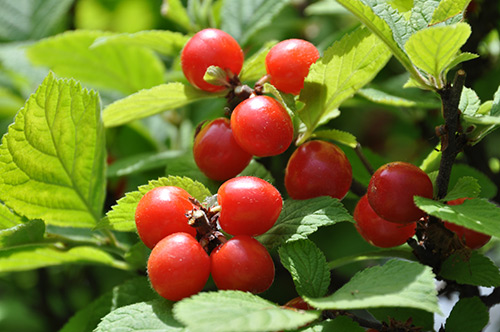
In the wild, this culture grows only outside our country: in Japan, China, Korea. In our country, as a rule, felt cherries are specially grown in gardens and summer cottages, since excellent compotes, preserves and jams are obtained from its fruits. It is also used to treat certain diseases.
Choosing a landing site
In order for the felt cherry to feel normal and bear fruit successfully, it is better to choose an elevated place well-lit by the sun for it. Although it can tolerate semi-shading, it is still not worth planting this shrub close to fences and hedges, especially in those regions where there is too much snow during the cold season. This is explained by the fact that excess moisture during spring melting of snow leads to podoprevanie and damage to the bark at the root collar. Often the aboveground part dies, and the preserved root system can then give rise to growth. This is probably due to the fact that this species was formed in places where winters are moderately cold and with little snow. Waterlogged soils or too much watering can also lead to underpinning of the root collar and adversely affect the growth of the bush. Therefore, the soil in the site chosen for planting should be light, well-drained, loamy or sandy loam, and slightly fertilized. Acidic soil can be calcified. Planting seedlings in a sunny place will help the berries ripen earlier.
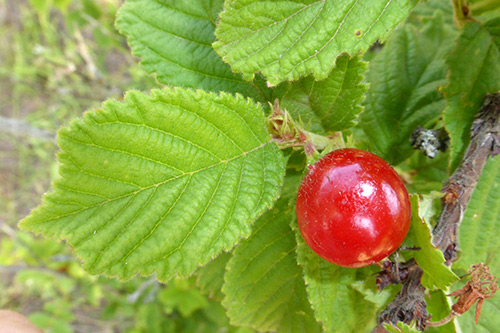
Landing procedure
Felt cherries are best planted before the buds of the seedlings. The planting pit (about 60 × 50 cm) is filled with fertile soil in the form of a mound, on which a seedling with straightened roots is placed. Having covered the planting hole with soil so that the root collar of the plant is slightly above ground level, the soil around the young bush must be compacted and watered abundantly. After that, the hole can be mulched.
For normal pollination, you need to plant several cherry bushes of different varieties.
Reproduction
This culture can be propagated in different ways. The main method is propagation by seeds (bones). The seeds for this purpose are taken from the best specimens, which give a more abundant and better-tasting harvest. After thoroughly washing, the seeds must be dried. It is recommended to store them before sowing in wet sand, placing them in a cool place. Seeds are sown in October or early spring, subject to preliminary stratification. The seeds are embedded in grooves with a depth of about 3 - 4 cm. When planting in autumn, the seedlings obtained in spring in the first year grow up to half a meter high. In the fall or next spring, these seedlings are planted in a permanent place. In this case, the cherry will yield for 3-4 years.
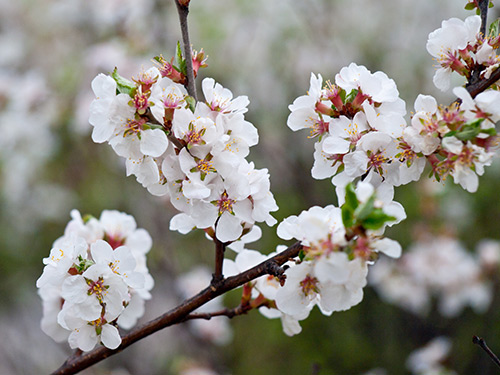
To speed up fruiting, it is better to sow in the fall, seeding the seeds immediately to a permanent place of growth. A hole is prepared, the same as for planting a seedling, and several seeds are planted in it in order to then leave the best of the germinated plants. Bypassing the transplant, young seedlings develop faster. In this case, the harvest can be obtained a year earlier.
The second way to grow felt cherries is propagation using horizontal layers. The branch must be bent and dug in to a depth of about 5 - 10 cm. The ditch must be watered. At the end of summer, a seedling with developed roots will turn out, which, having been cut off from an adult bush, can be planted in a permanent place.
Also, felt cherries can be propagated by green and lignified cuttings.
It should be noted that the properties of the mother plant are not always preserved when the culture is cultivated with seeds. For this, it is better to use the propagation method by horizontal layers or cuttings.

Felt cherry care
Caring for young seedlings is not particularly difficult. Branches in the crown of growing trees must be thinned out so that the bush is better illuminated by the sun and the crop ripens earlier. As with other fruit and berry trees, broken and diseased branches must be removed. When the annual growth diminishes, rejuvenating pruning will not harm the cherries. It is necessary to remove the top of the branches before the last strong growth. Since excessive soil moisture is harmful to felt cherries, and the plant tolerates drought, it needs watering only when it does not rain for a long time. The culture does not tolerate deep digging of soil around the trunk. Loosening is recommended instead. The plant also reacts poorly to excessive doses of mineral fertilizers. It is enough just to mulch the soil with peat, compost or humus.
Harvesting
The berries begin to ripen from the beginning of July. Collected from the bush, they are a great treat. However, juicy berries are unsuitable for long-term storage; they must be immediately processed. The seeds are poorly separated from ripe fruits.
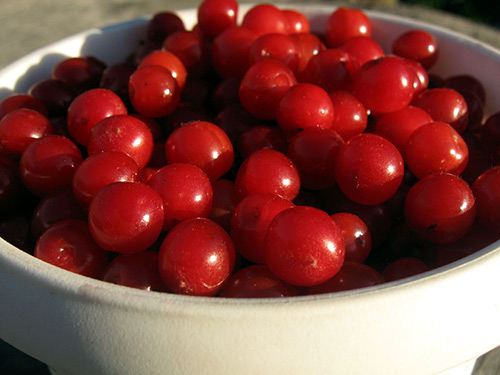
Diseases and pests
Felt cherry is rarely subject to disease, but sometimes it can be damaged by mice and other rodents. In such cases, repellent substances should be used, which cover tree trunks for the winter.
Gardeners value felt cherries for their unpretentiousness and often use them as a rootstock for growing other crops such as undersized plums, cherries, sweet cherries and cherry plums. Growing this species, you can not only get a tasty and healthy harvest of berries, but also decorate your garden plot or yard with decorative bushes that look very beautiful, both during their flowering period and when they bear fruit. In May, the entire bush is covered with fragrant pinkish-white flowers, and in summer its branches sag picturesquely under the weight of a rich harvest.
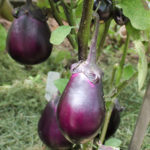
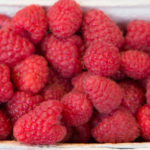
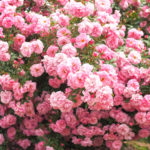

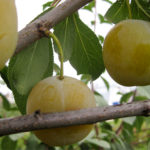
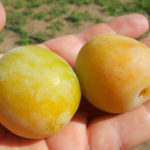



Felt cherry fruits cannot be found on sale due to their very short shelf life, so I decided to grow it myself - I really wanted to try it. As far as I know, trees for good fruiting need cross-pollination, and the pollinator can be either another variety of the same species or ordinary cherry (although biologically felt is a little closer to the plum than to the cherry). The young trees overwintered well (I have three of them), without any shelter. This season I expect to see flowering and the first signal fruits.
The article claims that felt cherries are not susceptible to disease, but I would probably object. I had two bushes and both died due to some strange disease. It all started with the fact that on one of the bushes on the largest branch all the flowers suddenly wilted at the same time and the branch began to die. When it was cut off, they thought that this would be the end, but after a while another branch wilted. Moreover, only the upper part wilted.We decided not to cut it, and suddenly it will recover ?. But the miracle did not happen ... After the winter, the bush did not wake up. After a while, the same story happened to the second, who grew up elsewhere. I had to buy new ones. While they are growing.